7 days cruise yacht Tribute – C
Route C (Thu - Wed) - Central and Western Galapagos Islands
- 7 days
- 2-16
Highlights of the tour
- Tortaoises in their natural habitat
- Iconic rock formations
- Volcanic landscapes
- Up close wildlife encounters
Overview
Venture into the evolutionary heart of the Galapagos on this extraordinary week-long odyssey—an immersive expedition designed for those who seek deeper meaning in exploration. From the volcanic majesty of Isabela and Fernandina to the remote shores of Bartholomé, Santiago, and Genovesa, this journey traces the path of natural history itself. Experience up-close wildlife encounters, dramatic geological formations, and moments of quiet wonder—each day curated with precision and delivered in effortless luxury aboard the Galapagos Tribute.
Walk among giant tortoises in the highlands of Santa Cruz, hike the vast caldera of Sierra Negra, kayak beside nesting penguins at Tagus Cove, and snorkel with marine iguanas, turtles, and reef sharks in the remote western waters. From flamingo-lined lagoons to iconic Pinnacle Rock, and from lava flows to land iguanas and seabird colonies, this is Darwin’s legacy brought vividly to life.
Itinerary
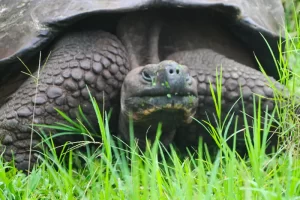 Morning – Arrival at Baltra airport: At the mainland airport, you have purchased your TCC or Ingala card and a luggage inspection has already been conducted to ensure that no foreign plant or animal species are introduced. Upon your arrival at Seymour Ecological airport, your TCC (Transit Control Card) will be stamped. This must be kept in a safe place during your trip, as it must be presented again on your return flight. In addition, the Galapagos National Park entrance fee is due upon entry (US$200), if not already paid. Your guide will meet you at the airport, help you with your luggage and accompany you on the short bus ride to the port of Baltra.
Morning – Arrival at Baltra airport: At the mainland airport, you have purchased your TCC or Ingala card and a luggage inspection has already been conducted to ensure that no foreign plant or animal species are introduced. Upon your arrival at Seymour Ecological airport, your TCC (Transit Control Card) will be stamped. This must be kept in a safe place during your trip, as it must be presented again on your return flight. In addition, the Galapagos National Park entrance fee is due upon entry (US$200), if not already paid. Your guide will meet you at the airport, help you with your luggage and accompany you on the short bus ride to the port of Baltra.
Afternoon – Highlands (Santa Cruz): You will visit the highlands of the island (so have your shoes and rain jacket ready). Observe giant tortoises in their natural habitat as well as a variety of native and migratory birds including tree finches, ground finches, Galapagos flycatchers and cattle egrets, often standing on the backs of tortoises. Lunch in the highlands. Then drive to Puerto Ayora, the capital of Santa Cruz and board the ship.
Meals: Lunch/Dinner
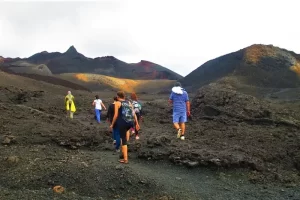
Sierra Negra is the third highest volcano on Isabela and the 5th highest of the Galapagos Islands (1124m). It is the only major volcano on Isabela whose crater area is open to tourism. A mysterious half-day hike through the cloud forests will lead you to a viewpoint on the edge, offering fantastic views into the impressive caldera (clear weather required, though unpredictable; prevailing winds mean clouds usually tend to disappear at the viewpoint). The caldera measures about 7 x 9km and is the largest in the archipelago. Since the discovery of so-called supervolcanoes like Yellowstone, it is no longer listed as one of the largest craters in the world.
Afternoon – After lunch, you will visit the turtle breeding center, where you can see hundreds of giant turtles of all sizes. The defenseless hatchlings are not big at all, in fact they are smaller than the size of your palm! This project outside of Puerto Villamil was created to save the endangered populations on the southernmost volcanoes.
You will also have a chance to see flamingo colonies in the wetlands that surround Puero Villamil.
Meals: Breakfast/Lunch/Dinner
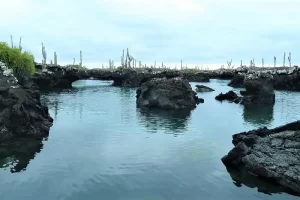
Afternoon – Espinoza Point (Fernandina): Espinoza Point is the only visitor destination by land on Fernandina Island and one of the few places where you can find some bizarre outgrowths of natural selection. The poster child for this is the flightless cormorant, which lives exclusively on the remote western side of the Galapagos and is a kind of Holy Grail of evolution. You’ll also love the almost alien view of the cone of La Cumbre volcano with its spectacular backdrop. The narrow headland you walk along is the end of the lava tongue that has reached the coast and solidified through contact with the cold sea water.
Meals: Breakfast/Lunch/Dinner
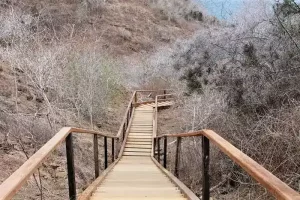
Afternoon – Vicente Roca Point (Isabela): During lunch you will cross the Bolivar Channel for the last time to reach Vicente Roca Point, at the mouth of the seahorse-like shape of Isabela Island. Entering a dark cave under a spectacular arch, the echoes of the waves will accompany you. Just around the corner, the collapsed amphitheater of the Ecuador volcano offers you another impressive view. The calm waters of the bay are well protected from the ocean waves. The water is quite cold, but an excellent place to snorkel among various species of sharks, penguins, puffer fish and seahorses.
Meals: Breakfast/Lunch/Dinner
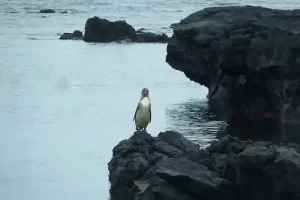
Afternoon – Sullivan Bay (Santiago): Arriving at Sullivan Bay is like landing on the moon. The desolate, sprawling area seems mostly lifeless, but this island, which is popular with photographers, still offers much to discover. There’s even life! Green turtles burrow on the small white beach, where you can also spot crabs, Canada herons and oysterfischers.
Meals: Breakfast/Lunch/Dinner
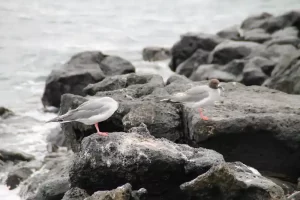
The short trail crosses the coastal vegetation zone as well as the slightly higher dry zone with endangered tropical dry forest. During the warm and humid season in the first half of the year, everything turns green.
Evergreen giant opuntias with internal water reservoirs chose a different survival tactic in this dry climate than the leaf-dropping palo santo trees; in the end, both were successful. It’s also a very photogenic place, with stunning panoramas over the bay and onto a fascinating, steep volcanic spout of red lava that overlooks the area. Dragon Hill has become famous for its salty lagoons behind the beach; these contain seaweed and shrimp and attract American flamingos seasonally. Dragon Hill is the best place on Santa Cruz to see them.
Afternoon – North Seymour: The shallow little island of North Seymour is an elevated part of the seabed. You can spot Galapagos iguanas among the scraggy bushes. You will also see many seabirds such as the brown pelican, red-billed tropicbirds, fork-tailed gulls and, depending on the season, Nazca boobies. The main attraction, however, is Galapagos’ largest breeding colony of blue-footed boobies – be careful not to step on their nests! – And frigatebirds. At the beginning of the breeding season, adult male frigatebirds inflate their bright red throat pouches to nearly the size of a soccer.
Meals: Breakfast/Lunch/Dinner
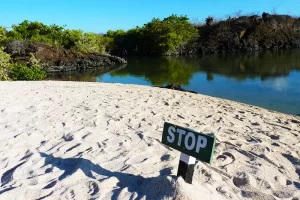
After this excursion you will be transferred to the airport and say goodbye to the guide and crew!
Meals: Breakfast
- Included services
- Luxurious suite accommodation with private facilities and ocean views.
- All meals on board, from lunch on embarkation day to breakfast on disembarkation day.
- Selection of complimentary house beverages, including Ecuadorian wines, local lager beer, and soft drinks.
- Guided excursions with two certified English-speaking naturalist guides (one guide for
- groups under 8 guests for FIT bookings / Cabin charter).
- Use of one pair of binoculars per suite for wildlife observation.
- Aquatic exploration equipment, including: Tandem kayaks and stand-up paddleboards, Full snorkeling gear (mask, fins, snorkel), Wetsuits (2.5mm, full-body)
- Complimentary high-speed WiFi, subject to connectivity in remote areas.
- VIP airport lounge access at Baltra (arrival & departure) and San Cristobal (departure only).
- Ground transfers in Galapagos between airport and yacht for guests arriving/departing on
- recommended flights
- Not included services
- Roundtrip airfare to the Galapagos Islands from mainland Ecuador (Quito or Guayaquil).
- Galapagos National Park entrance fee: USD 200 per person (subject to official updates).
- Transit Control Card (Migration control): USD 20 per person (subject to change).
- Premium beverages, including fine wines, spirits, and crafted cocktails (premium packages available).
- Boutique purchases made on board.
- Gratuities for the crew.
- Mandatory travel insurance and any other personal expenses.
Hints
Ask us for children or group discount.
Price not valid for Christmas and New Years´s Eve departures.
All prices are subject to change if local tax increases or other circumstances beyond our control occur.
The itinerary is subject to change at any time due to circumstances beyond our control.
In order to rent a wetsuit, we will need your clothing size (S/M/L/XL) before your arrival in Galapagos. Standard wetsuits with a thickness of 3 mm are rented.
Travel Insurance:
To protect your travel investment, we highly recommend the purchase of travel insurance. Travel insurance is intended to cover medical expenses, trip interruption and cancellation, theft and other losses incurred while traveling domestically or internationally.
Visa and Entry Requirements:
Ecuador requires a valid passport (with a minimum 6 months validity). Contact your local embassy or consulate for the most up-to-date visa requirements.
Other interesting cruises
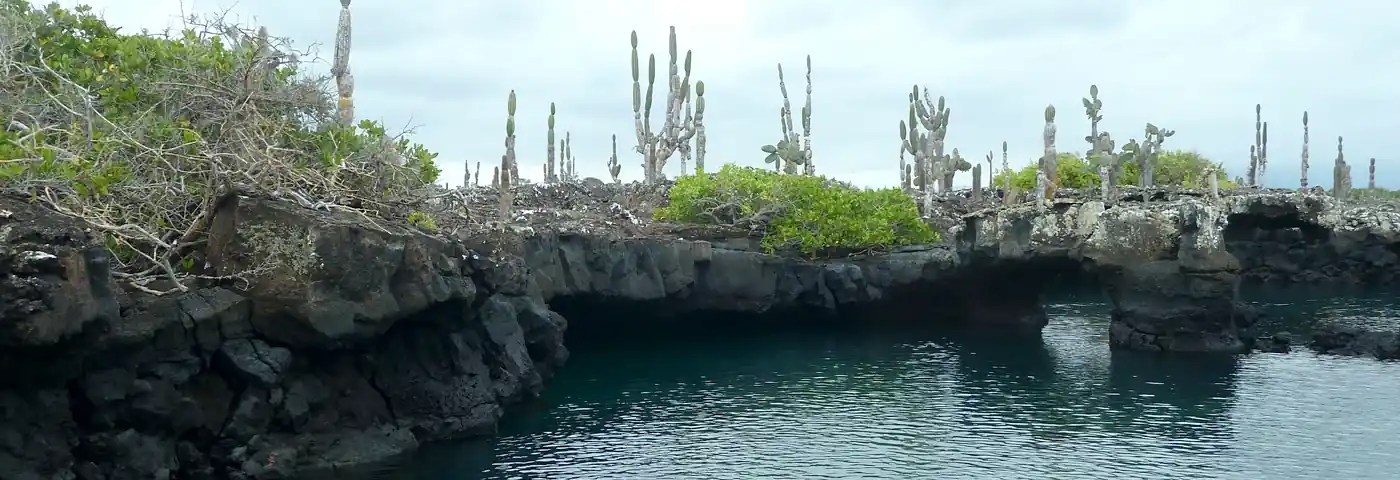
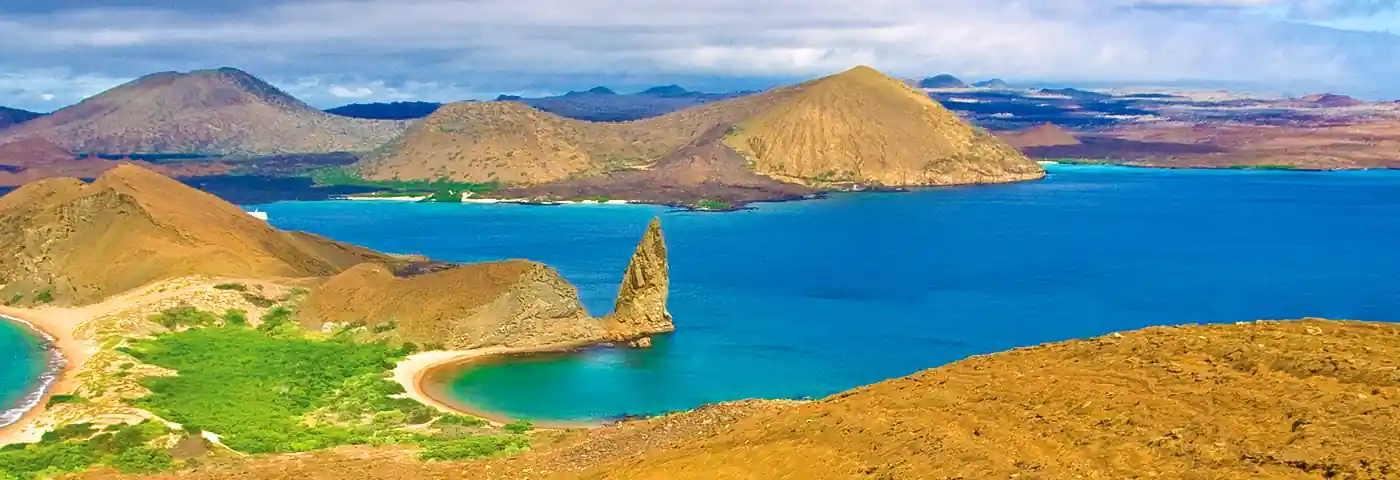
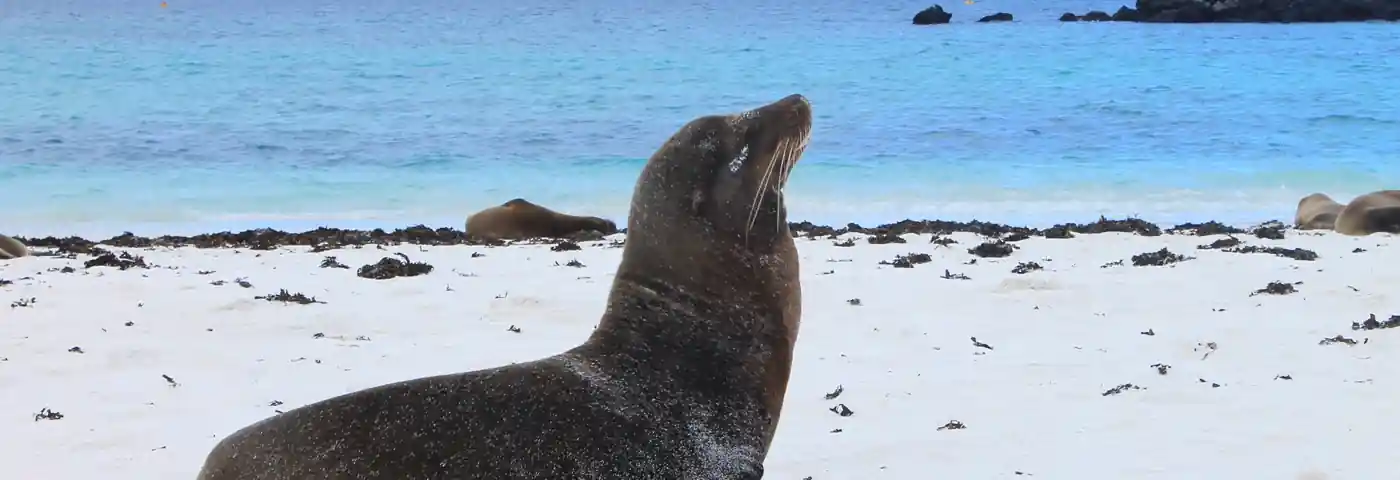
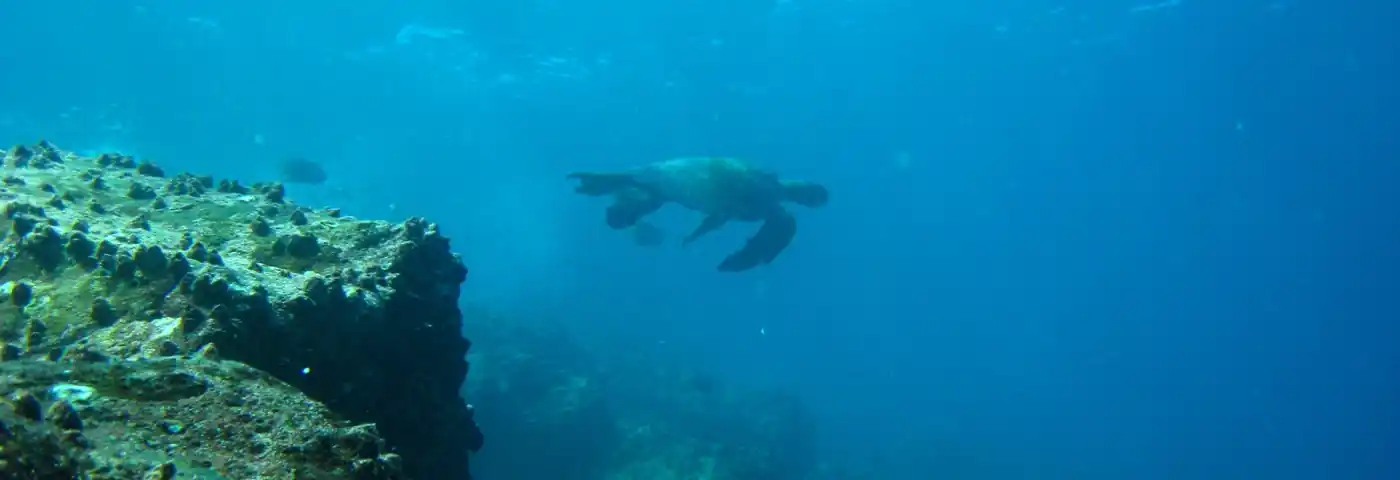

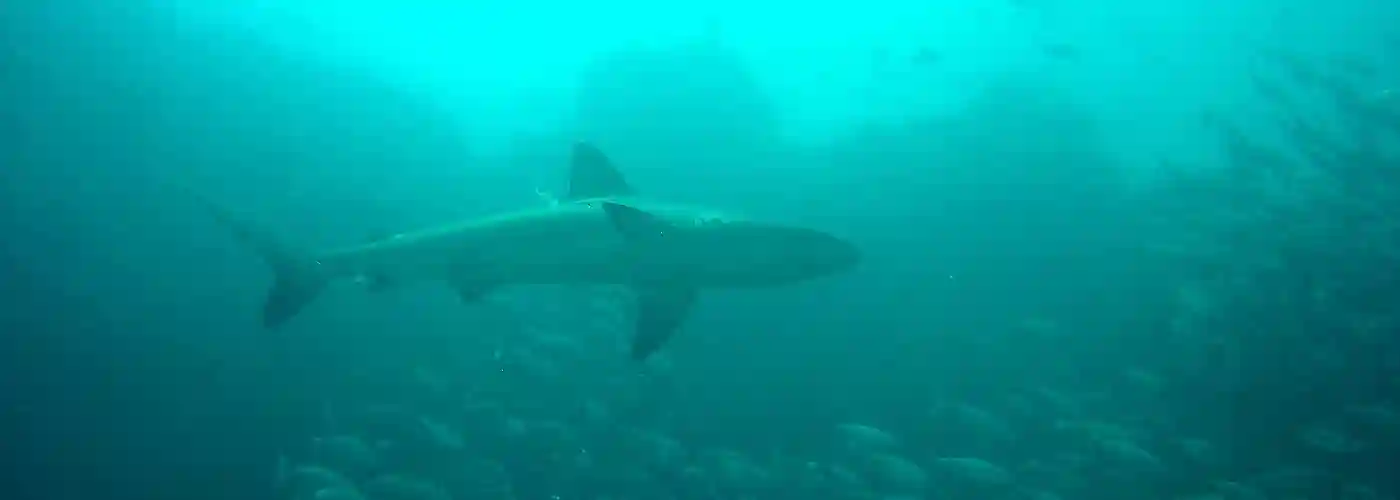
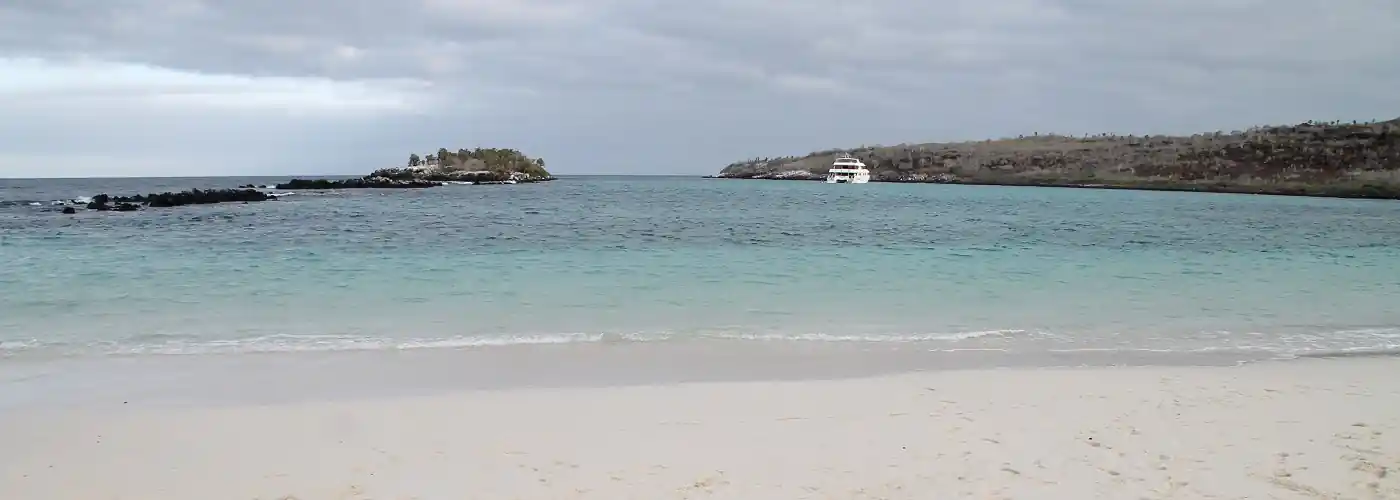
- 8 days
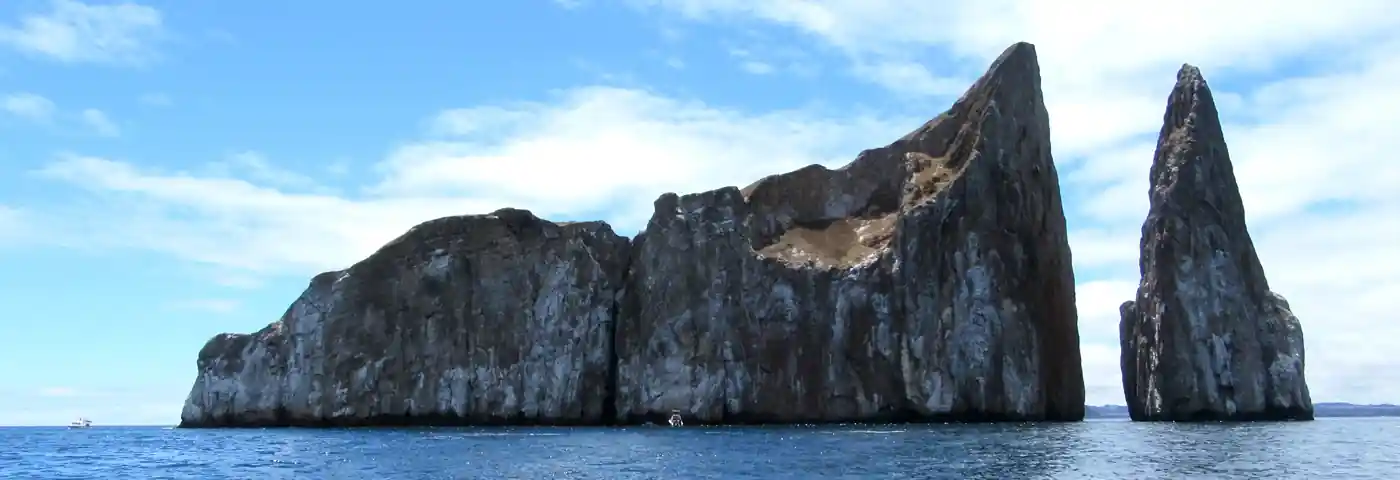
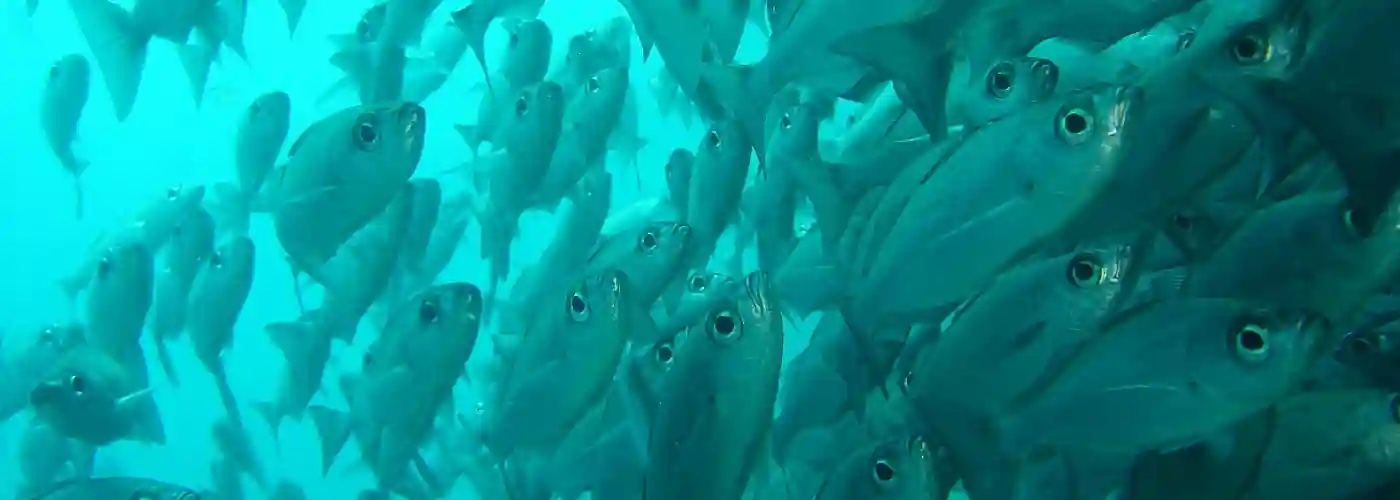
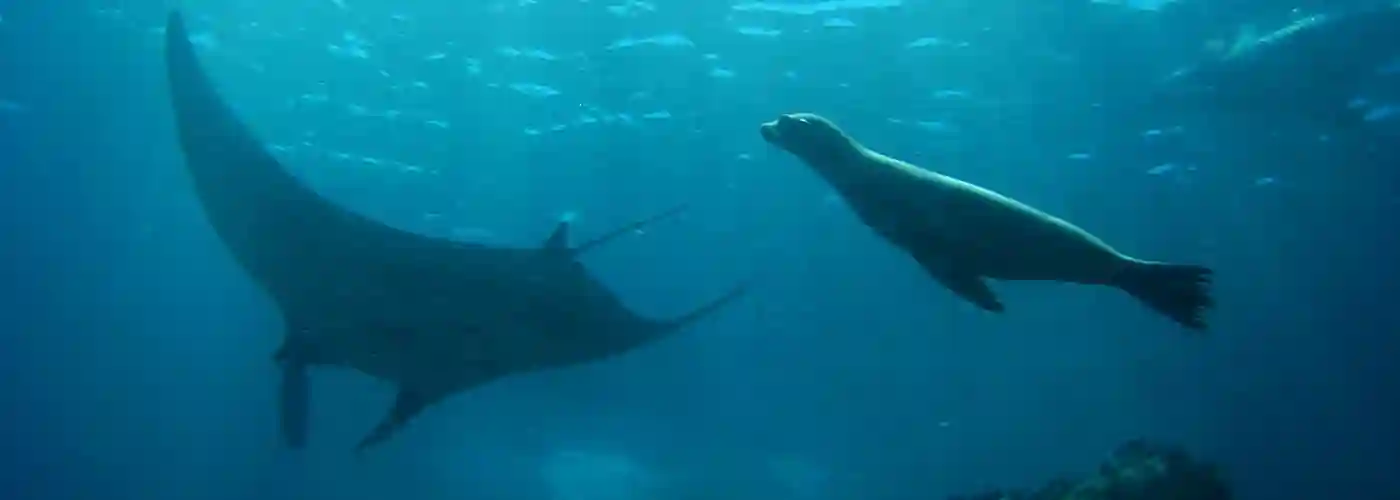

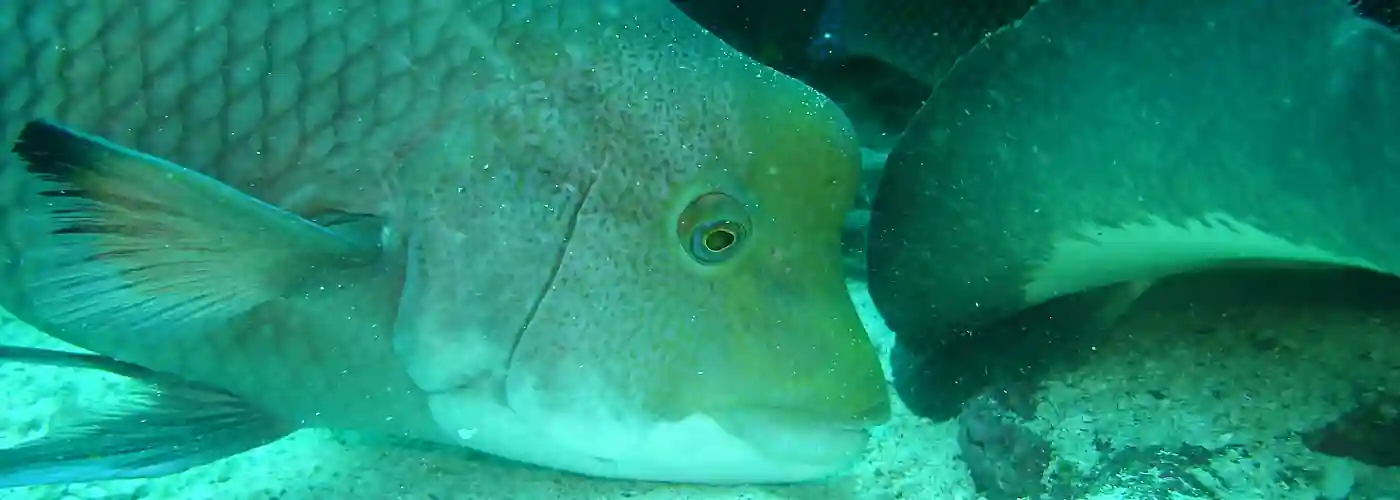

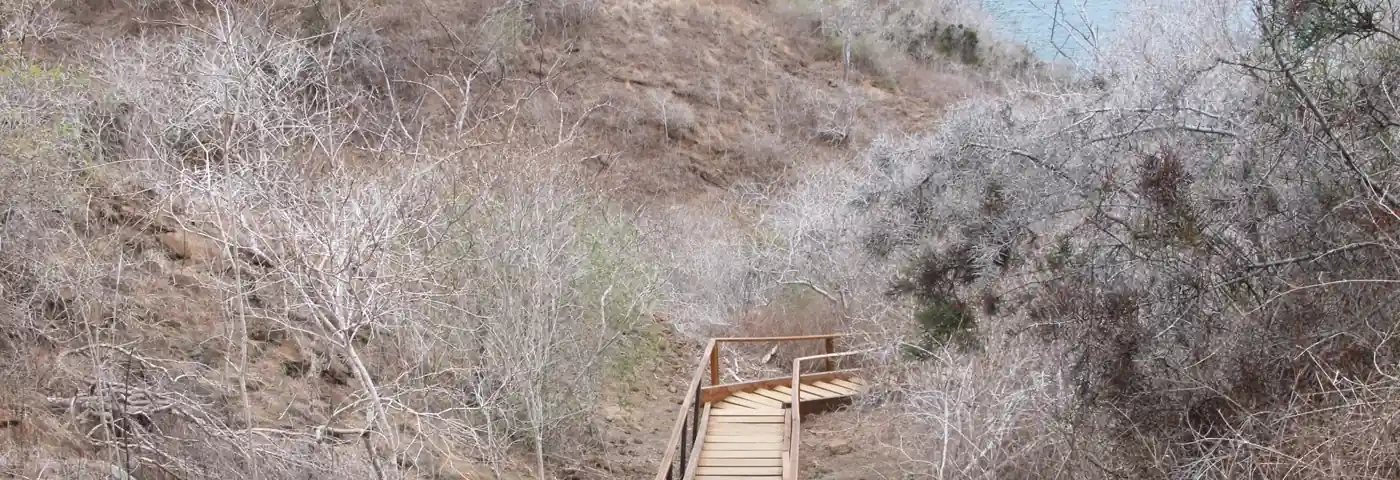
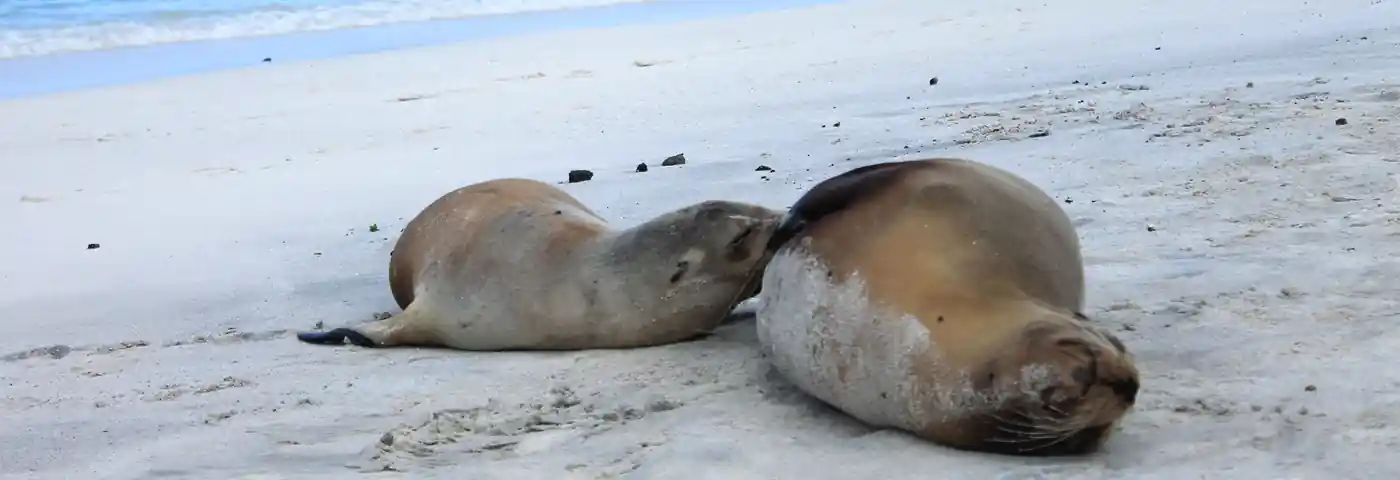
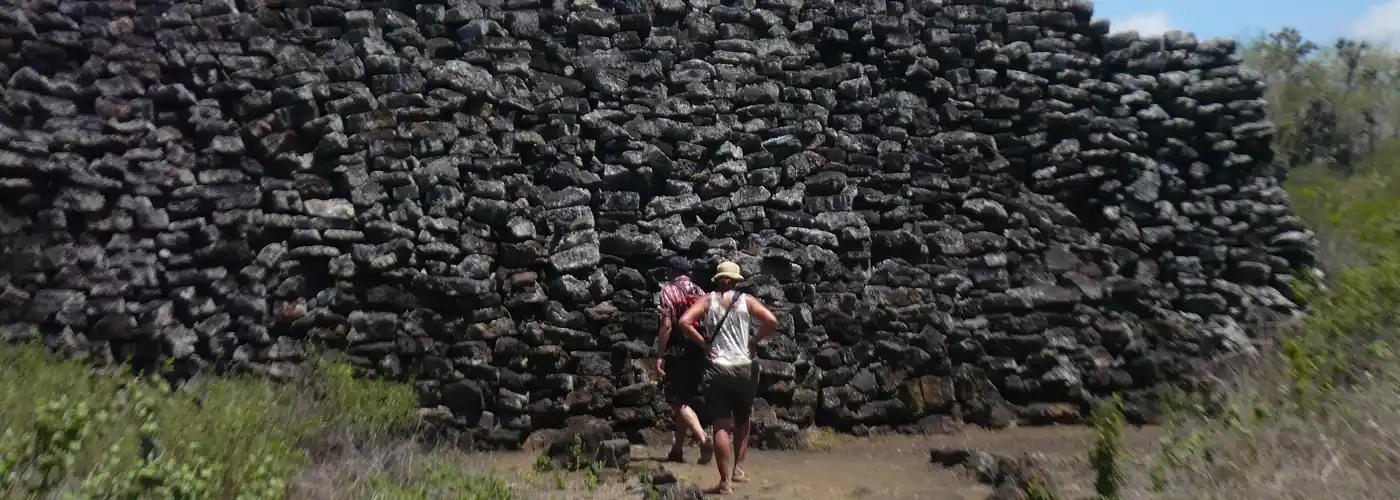
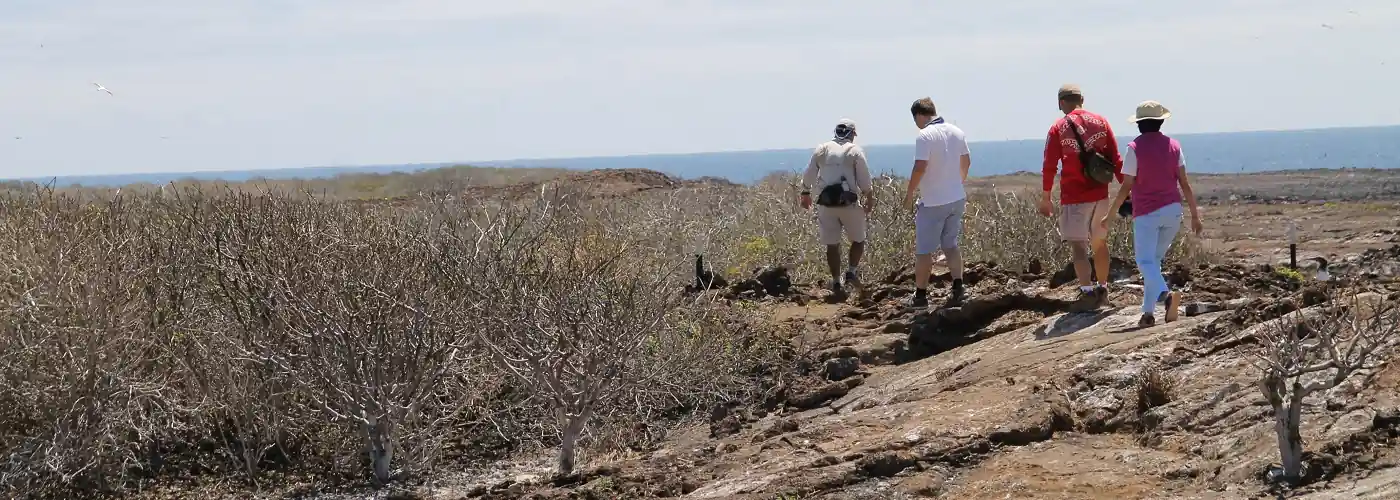
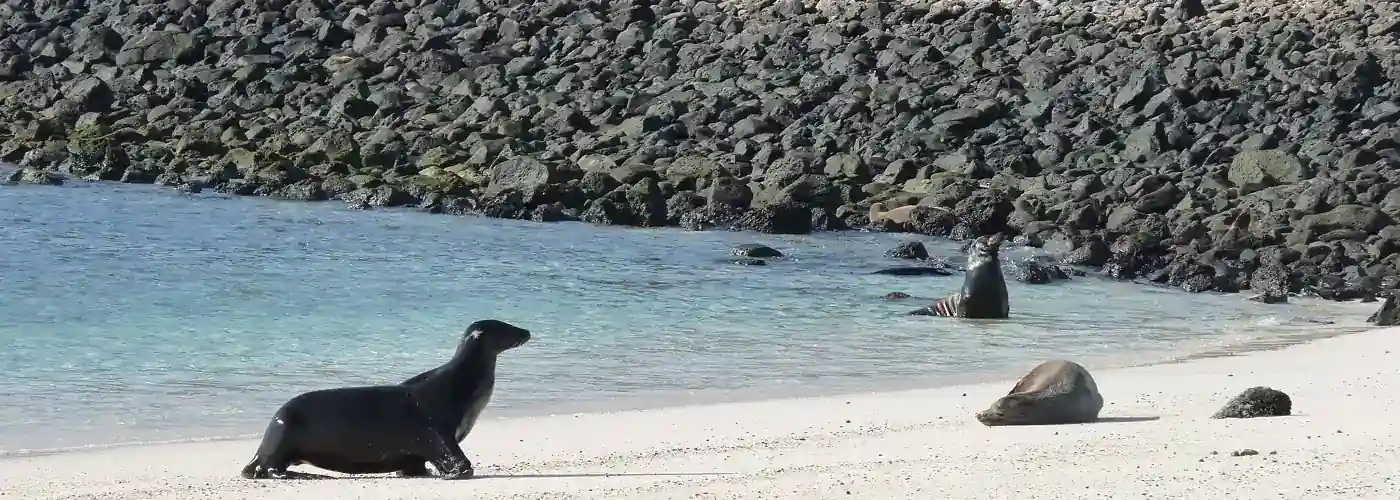

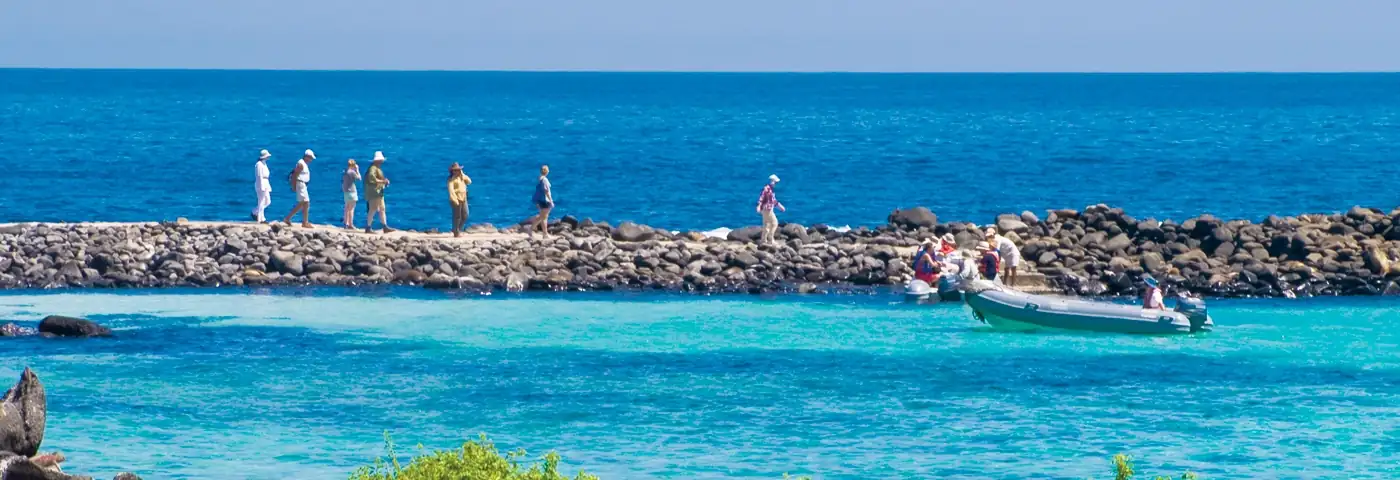
7 days cruise yacht Tribute – C
Get in touch:

Dayana Arias Leon
- +593 (0)2 2194333
- hello@soleq.travel
